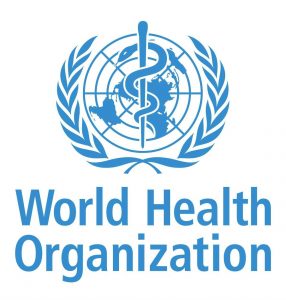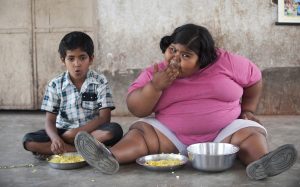 Prof. Raj Kishore Panda in Bhubaneswar, August 12, 2023: India has been going through a rapid epidemiological transition-from a land of under-nutrition and underweight population to a country of over-nutrition and overweight/obese population. Data showing nutritional status of adults by the National Family Health Survey-5 (2019-21) indicate that the percentage of overweight/ obese individuals (15-49 years) in the country outweighs the underweight ones.
Prof. Raj Kishore Panda in Bhubaneswar, August 12, 2023: India has been going through a rapid epidemiological transition-from a land of under-nutrition and underweight population to a country of over-nutrition and overweight/obese population. Data showing nutritional status of adults by the National Family Health Survey-5 (2019-21) indicate that the percentage of overweight/ obese individuals (15-49 years) in the country outweighs the underweight ones.
Gender-wise 24 percent women and 23 percent men aged 15-49 are found overweight or obese in the country as against 19 percent women and 16 percent men in the underweight category. Besides, between 2015-16 (NFHS-4) and 2019-21 (NFHS-5) obesity has shown a 4 percent point rise (4.3 points among men and 3.4 points among women).
Generally overweight/obesity is a condition characterized with an increase in size and amount of fat cells in the body. It is seen when a person is too heavy for his/her height. Overweight/obesity results from an imbalance between energy consumed and energy expended. Commonly assessed on the basis of Body Mass Index (BMI) it is defined as the ratio of weight ( in kilograms) to squared height (in metre) and thus expressed as kg/m2.
 Based on WHO standard of BMI, any individual having 25kg/m2 or above is considered as overweight, 30kg/m2 or above as obese and more than 40kg/m2 as sever obese (normal individual having between 18.5kg/m2 to 24.9kg/m2 and underweight below 18.5/m2). Overweight/ obesity is a chronic disorder in an individual that increases his/her risks to several non-communicable diseases (NCDs) such as; diabetes, hypertension, strokes, certain cancers etc.
Based on WHO standard of BMI, any individual having 25kg/m2 or above is considered as overweight, 30kg/m2 or above as obese and more than 40kg/m2 as sever obese (normal individual having between 18.5kg/m2 to 24.9kg/m2 and underweight below 18.5/m2). Overweight/ obesity is a chronic disorder in an individual that increases his/her risks to several non-communicable diseases (NCDs) such as; diabetes, hypertension, strokes, certain cancers etc.
Studies report rising burden of NCDs surpassing the burden of communicable diseases (CDs) in India. The WHO study on the rise of NCDs in 2017 has estimated nearly 5.8 million deaths occurring in India annually. A report of Ministry of Health and Family Welfare, Government of India accounting the burden of NCDs has stated that between 1990 and 2016 while death due to NCDs has increased from 37% to 61%, disability due to NCDs has increased from 30% to 55%.
For India obesity trend has posed serious challenges. Between 2006-16 while India experienced rapid decline in child and adult under-nutrition, during this period adult overweight/obesity has doubled. Besides obesity is no more a problem of urban well-to-do in India. In recent years it has increasingly entered into the villages and among middle-class households.
Between 2015-16 and 2019-21 obesity growth in rural areas is found higher than that in urban areas. During this period, while obesity among rural men and women increased by 5 and 4.6 percent points respectively, among the urban men and women it increased by 3.2 and 0.8 percent points. Faster rise in incidence of rural obesity is largely attributed to changes in the nature of work in rural areas. As the Indian economy has been going through the process of structural transformation it has led to increasing movement of labour away from physically strenuous farm-based employment.
Overweight/ obesity besides associated with life-threatening diseases have serious economic consequences at the individual, household and state level. Not only it affects the medical cost of an individual but also it entails a productivity cost to the household and state in the form of absenteeism, premature mortality, disability etc.
A study (2022) on the average obesity cost at the all-India level works out to be Rs2.8 lakh crore per annum. Based on the exercise it is estimated that if the spread of obesity is not controlled, India would incur a loss of nearly Rs 69 lakh crore amounting 2.5 percent of its GDP in 2060.
 Obesity, no doubt has now emerged as a potential threat to public health in India. Since the country is going through a demographic transition characterised by declining birth and death rates and an increasingly ageing population, obesity is bound to rise.
Obesity, no doubt has now emerged as a potential threat to public health in India. Since the country is going through a demographic transition characterised by declining birth and death rates and an increasingly ageing population, obesity is bound to rise.
This combined with rising income due to considerable economic growth will further increase average calorie intake per individual in middle and high income households enhancing obesity concern. Studies have shown rise in people’s habit in taking food away from home and the country is experiencing reversal in the declining trend in per capita calorie intake in recent years.
The existing public policies and interventions largely emphasize on the programmes of ameliorating poverty, hunger and under-nutrition. A few years ago there was a discussion of a ‘Sin Tax’ to raise prices of unhealthy food and drink to discourage their consumption but it did not work out. Time has come to adopt strategy to discourage the consumption of unhealthy foods. Similar to the mandatory warning on cigarette packets, the packets of unhealthy foods and drinks should contain pictorial warning to deter people from consuming the products.
With under-nutrition prevailing at a high level, increased prevalence of adult obesity puts India in a challenging situation. Health care being a state government area of making policies it is difficult to manage the double burden of malnutrition (under-nutrition and obesity) at the state level due to paucity of resources. Both central and states have to rise to the occasion. Sooner they rise to the occasion, the better.



Leave a Reply
Be the First to Comment!